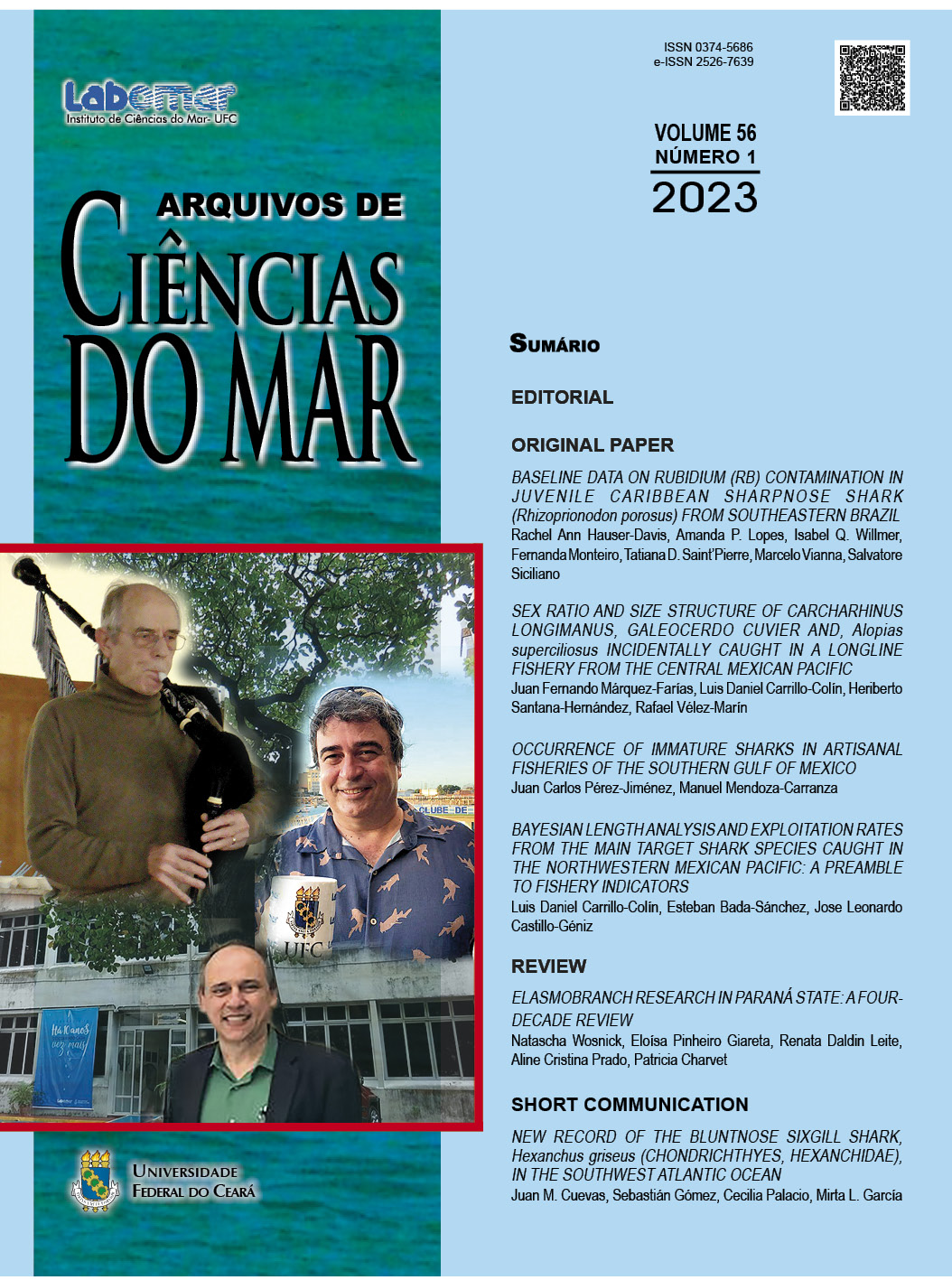BETWEEN BUCCAL PUMPING AND BITING - EVIDENCE OF INTRAUTERINE MOUTH MOVEMENTS AND REPRODUCTIVE ASPECTS OF NEOTROPICAL FRESHWATER STINGRAYS (Elasmobranchii: Potamotrygoninae)
Entre bombeamento bucal e mordida - Evidências de movimentos bucais intrauterinos e aspectos reprodutivos de raias de água doce neotropicais (Elasmobranchii: Potamotrygoninae)
DOI:
https://doi.org/10.32360/acmar.v56i1.93315Resumen
Preliminary findings regarding the reproduction of three neotropical freshwater stingray species, Potamotrygon henlei, P. motoro, and P. orbignyi, are presented herein. These species are characterized by the presence of a singular functional left ovary and two operational uteri. Two distinct fertility models have been identified: fecundity dependent, and fecundity independent of maternal size. Furthermore, this study briefly outlines the process of capture-induced parturition and its implications for the fate of the litter. Additionally, it sheds light on novel embryonic behavioral patterns, particularly highlighting the active swimming exhibited by embryos within the uterine environment, notably during the latter stages of development. Consequently, it is suggested that these movements, coupled with oral activities and active biting, facilitate branchial ventilation and potentially intrauterine foraging - a phenomenon previously documented only in sharks belonging to the order Lamniformes.
Keywords: Abortion, Histotroph, Capture stress, Embryonic nutrition.
Descargas
Publicado
Número
Sección
Licencia
Derechos de autor 2024 Arquivos de Ciências do Mar

Esta obra está bajo una licencia internacional Creative Commons Atribución 4.0.
1. Proposta de Política para Periódicos de Acesso Livre
Autores que publicam nesta revista concordam com os seguintes termos:
- Autores mantém os direitos autorais e concedem à revista o direito de primeira publicação, com o trabalho simultaneamente licenciado sob a Licença Creative Commons Attribution que permite o compartilhamento do trabalho com reconhecimento da autoria e publicação inicial nesta revista.
- Autores têm autorização para assumir contratos adicionais separadamente, para distribuição não-exclusiva da versão do trabalho publicada nesta revista (ex.: publicar em repositório institucional ou como capítulo de livro), com reconhecimento de autoria e publicação inicial nesta revista.
- Autores têm permissão e são estimulados a publicar e distribuir seu trabalho online (ex.: em repositórios institucionais ou na sua página pessoal) a qualquer ponto antes ou durante o processo editorial, já que isso pode gerar alterações produtivas, bem como aumentar o impacto e a citação do trabalho publicado (Veja O Efeito do Acesso Livre).

